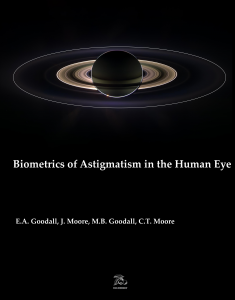Books
Hannigan BM, Moore CBT, Quinn DG: Immunology second edition, Scion 2009.

Description
This second edition of Immunology provides readers with the basic concepts of immunology and relates these to the practical applications within medicine and biology. It is therefore an ideal first textbook for students studying biomedical science courses or postgraduate students new to the subject. The entire book has been comprehensively updated and features significantly expanded coverage of, for example: *antigen acquisition and presentation *regulation of acquired immune responses *transplantation and tumour immunology Throughout every chapter the authors have also provided extensive coverage of the applications of immunology to diagnostics in particular. The inclusion of a glossary in this new edition is designed to improve understanding and help students overcome their inherent fear of the complex field of immunology. In addition, this latest edition features two new appendices covering selected cytokines and their functions, and selected CD antigens and their expression, reference material that all those who work in the field will find invaluable.
Reviews from Amazon.co.uk
…as a work of reference for basic immunological concepts, this book is perfect. –Tove Ragna Reksten, Scandinavian Journal of Immunology
…The level of information is thorough throughout…[this book] would provide an excellent handbook to junior immunologists (undergraduates, new graduates, research assistants and those new to the subject) by providing a readable and understandable overview, while managing (mostly) not to be too basic or too complex. I would recommend this text book to immunology labs as an early-stage, easily readable guide to the very broad subject area of Immunology… –Barbara Guinn, Cancer Sciences Division, University of Southampton, UK
E.A. Goodall, J. Moore, M.B. Goodall, C.T. Moore: Biometrics of Astigmatism in the Human Eye, Blueberry Publishing 2014
Description
This book reviews methodologies used for the analysis of clinical trials to improve or eradicate astigmatism problems in the human eye. In particular, it assesses biometric techniques where the objective is to elucidate the impact of changes in both magnitude and direction of astigmatism. A unified approach is presented with the aim of resolving current disputes in these key areas of visual science.
Please CLICK HERE for further information
Book Chapters
Paulina Baran-Rachwalska, Suzanne Saffie-Siebert, and C.B. Tara Moore: Delivery of siRNA to the Eye: Protocol for a Feasibility Study to Assess Novel Delivery System for Topical Delivery of siRNA Therapeutics to the Ocular Surface (Chapter 24), Springer Protocols 2021
Description
This volume details protocols on rationale design of therapeutic siRNA molecules and its encapsulation with smart vehicles to overcome the barriers to an effective administration in vivo. Written in the highly successful Methods in Molecular Biology series format, chapters include introductions to their respective topics, lists of the necessary materials and reagents, step-by-step, readily reproducible laboratory protocols, and tips on troubleshooting and avoiding known pitfalls.
Authoritative and cutting-edge, Design and Delivery of SiRNA Therapeutics aims to ensure successful results in the further study of this vital field.
Please click HERE for further information
C.B. Tara Moore, Larry A. DeDionisio, Hila Roshanravan, Connie Chao-Shern and M. Andrew Nesbit: The Application of CRISPR/CAS9 Therapies in Opthalmology and Recent Advances for the Treatment of Genetic Eye Disease (Chapter 3), Nova Science Publishers 2019
Description
This compilation focuses on the CRISPR/Cas9 system, a genome editing tool that has been hailed as the most profound molecular biology discovery in the past decade. By employing the natural process of bacterial immunity towards bacteriophages, the tool allows researchers to precisely excise and edit parts of the genetic sequence to modify them. The authors summarize the molecular pathogenesis of hepatocellular carcinoma, available treatments/drugs and their limitations, the landscape of CRISPR targeting hepatocellular carcinoma, limitations and potential targets in future. The closing review summarises the use of CRISPR/Cas9 gene editing in ophthalmology and focuses on the advancement of gene editing in the cornea. The majority of corneal dystrophies are the result an autosomal dominant inheritance pattern within the TGFBI gene, which presents an ideal model suited for a CRISPR/Cas9 knock out methodology.
Please click HERE for further information
Nesbit, M.A. and Moore, C.T., 2022. Gene editing for the cornea. In CRISPR Genome Surgery in Stem Cells and Disease Tissues (pp. 81-100). Academic Press.
Description
CRISPR Genome Surgery in Stem Cells and Disease Tissues focuses uniquely on the clinical applications of CRISPR/Cas9 based technology. Topics include the latest advances in gene editing and its translational applications to various diseases, including retinal degenerative disease, recessively inherited diseases, and dominantly inherited diseases, to name a few. The book’s target audience includes researchers, students, clinicians and the general public. This space that is not currently served by any existing resource, so this publication fills a gap in current literature.
This chapter discusses the current status of therapeutic gene therapy strategies for the
cornea.
Please click HERE for more information.
Wilson, A., DeDionisio, L., Marshall, J. and Moore, T., 2022. The Potential Roles of Genetic Testing and Biomechanical Evaluation in Keratoconus. In Keratoconus (pp. 73-97). Springer, Cham.
Description
“This book provides a practical guide to the most recent advances in the diagnostic management of corneal ectasia. Clear, concise chapters address new standardized nomograms of treatment of early progressive ectasia, new epithelium on future crosslinking with and without oxygen supplement, customized protocols, laser assisted corneal regularization protocols and the new femtolaser assisted lamellar corneal transplant. Clinicians and surgeons seeking a go-to guide on the topic of corneal ectasia will find this book to be an essential resource for the latest developments and predicted future trends in the field.”
Please click HERE for more information.
Leccisotti A, Islam T, McGilligan VE, Moore C.T: Lens Surgery after Deep Lamellar Keratoplasty (DALK). Cataracts: Causes, Symptoms & Surgery. Chapter pages – 139-148. New York : Nova Science, ©2010
Johnny E Moore, Davide Schirolli, and CB. Tara Moore: Corneal Collagen Cross-Linking 2nd Edition. Chapter – Corneal Crosslinking Limbal Stem Cell Effects. In Press 2015
Paulina Baran-Rachwalska, Suzanne Saffie-Siebert, C.B.Tara Moore: Delivery of siRNA to the Eye: Protocol for a Feasibility Study to Assess Novel Delivery System for Topical Delivery of siRNA Therapeutics to the Ocular Surface- published in Methods Molecular Biology, Vol. 2282, HenrikJ. Ditzel et al. (Eds): Design and Delivery of SiRNA Therapeutics, Springer Science+Business Media, LLC, part of Springer Nature, 2021 (Chapter 24).
Nesbit, M.A. and Moore, C.T., 2022. Gene editing for the cornea. In CRISPR Genome Surgery in Stem Cells and Disease Tissues (pp. 81-100). Academic Press.
Wilson, A., DeDionisio, L., Marshall, J. and Moore, T., 2022. The Potential Roles of Genetic Testing and Biomechanical Evaluation in Keratoconus. In Keratoconus (pp. 73-97). Springer, Cham.



